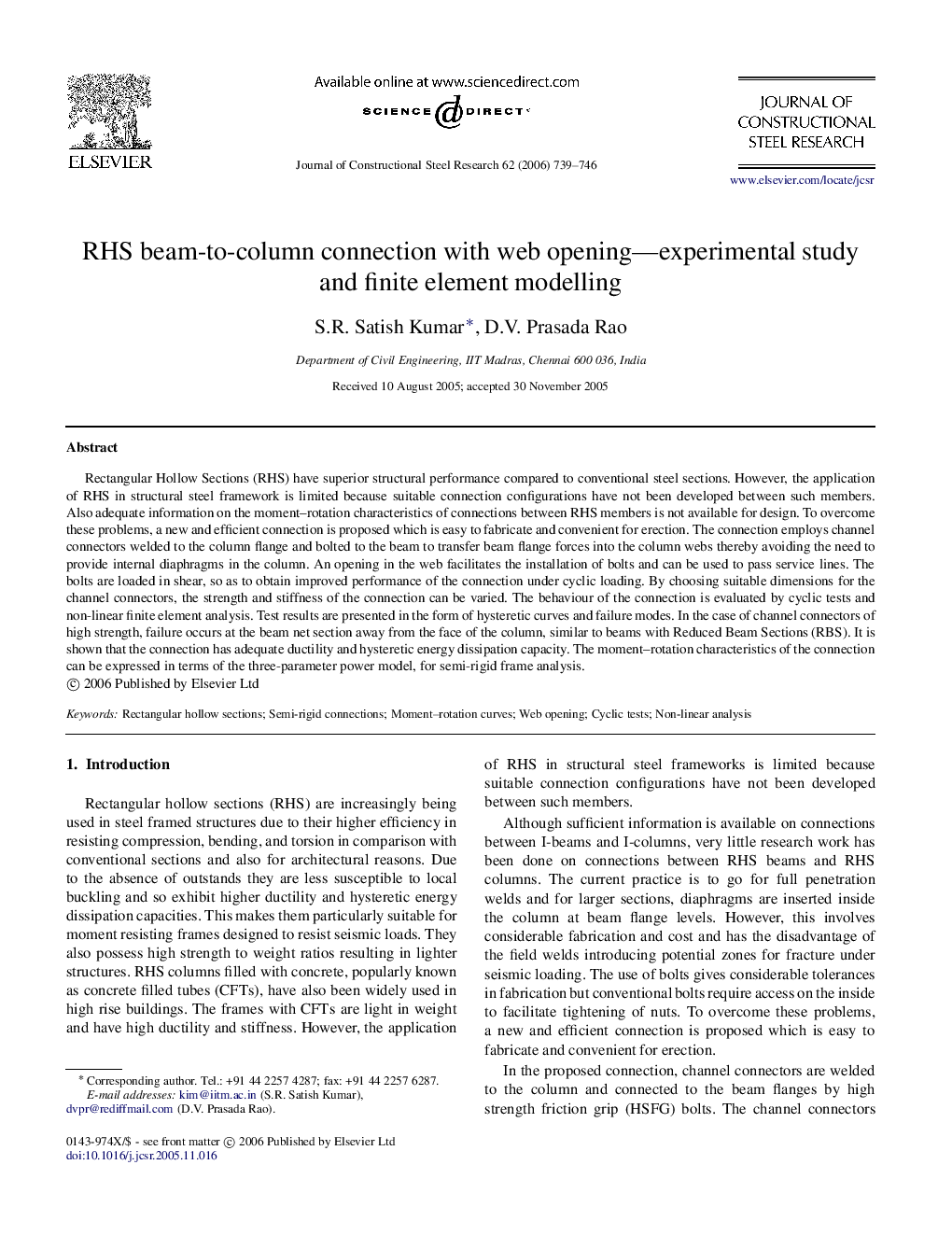| Article ID | Journal | Published Year | Pages | File Type |
|---|---|---|---|---|
| 286354 | Journal of Constructional Steel Research | 2006 | 8 Pages |
Rectangular Hollow Sections (RHS) have superior structural performance compared to conventional steel sections. However, the application of RHS in structural steel framework is limited because suitable connection configurations have not been developed between such members. Also adequate information on the moment–rotation characteristics of connections between RHS members is not available for design. To overcome these problems, a new and efficient connection is proposed which is easy to fabricate and convenient for erection. The connection employs channel connectors welded to the column flange and bolted to the beam to transfer beam flange forces into the column webs thereby avoiding the need to provide internal diaphragms in the column. An opening in the web facilitates the installation of bolts and can be used to pass service lines. The bolts are loaded in shear, so as to obtain improved performance of the connection under cyclic loading. By choosing suitable dimensions for the channel connectors, the strength and stiffness of the connection can be varied. The behaviour of the connection is evaluated by cyclic tests and non-linear finite element analysis. Test results are presented in the form of hysteretic curves and failure modes. In the case of channel connectors of high strength, failure occurs at the beam net section away from the face of the column, similar to beams with Reduced Beam Sections (RBS). It is shown that the connection has adequate ductility and hysteretic energy dissipation capacity. The moment–rotation characteristics of the connection can be expressed in terms of the three-parameter power model, for semi-rigid frame analysis.
